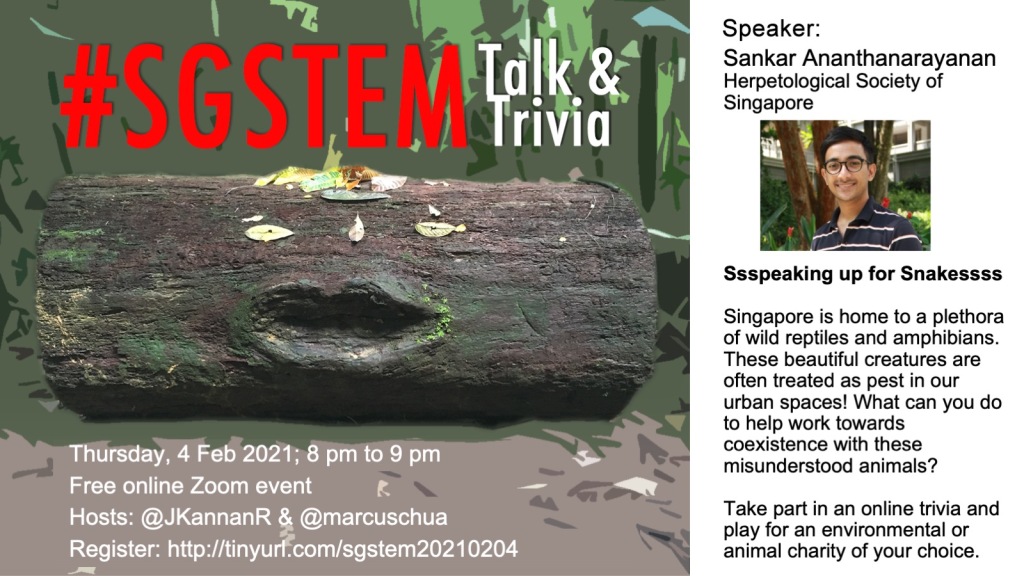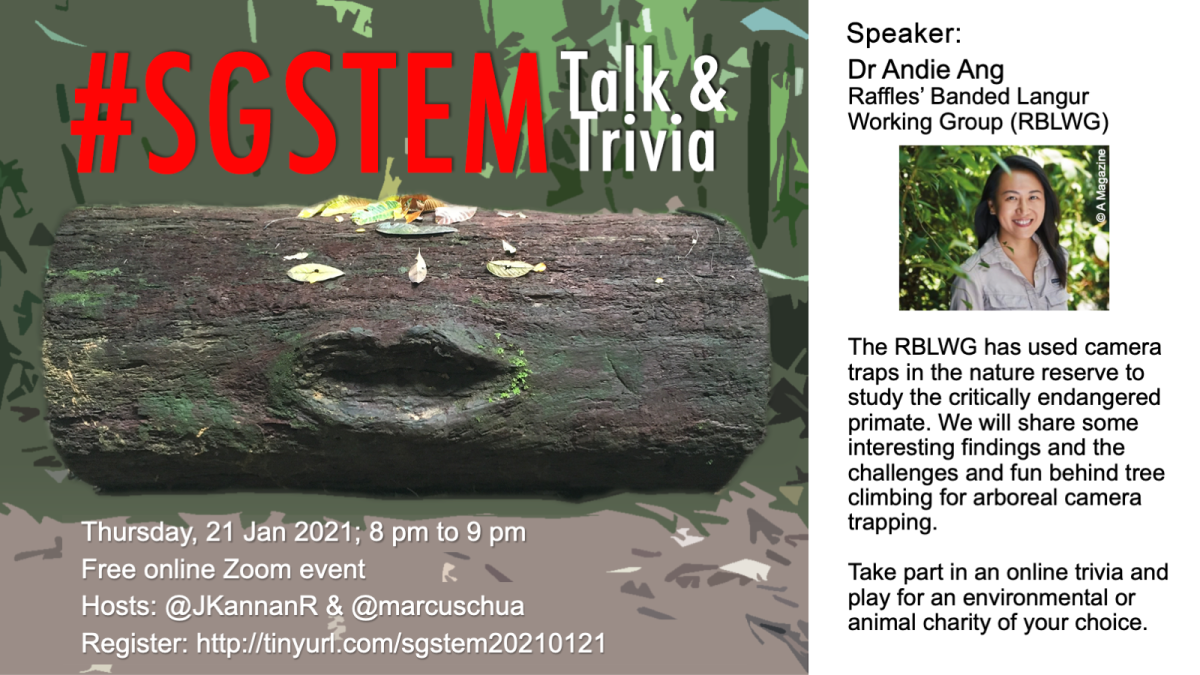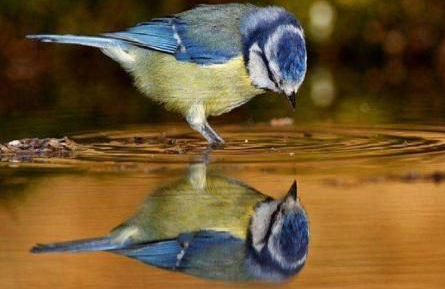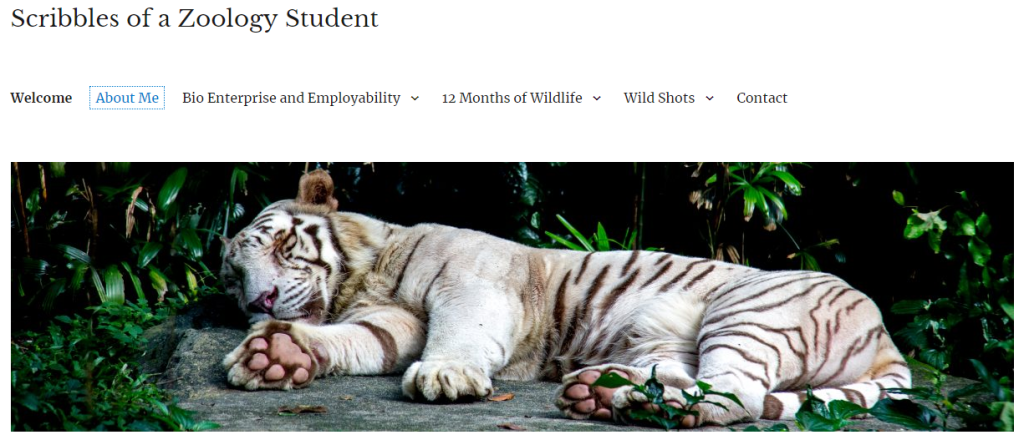Singapore is home to three native primate species; the long-tailed macaque, the Sunda slow loris, and the Raffles’ banded langur. Of these three, the Raffles’ banded langur is the rarest, with only 67 individuals found here. With only around 300 left in the world, these 67 rare monkeys are a top conservation priority. Dr Andie Ang, Research Scientist at Wildlife Reserves Singapore Conservation Fund shares with us how she observes this critically endangered native primate.
Monitoring these populations requires more taking a walk on the wild side for the conservationists and ecologists, as they have to embrace the ways of the jungle (and the langurs) and learn to climb trees. But hiring a professional climber would cost the researchers almost S$800 for just half a day. Thus, Andie and her colleagues took things into their own hands and went for a tree-climbing course with CUGE (Centre for Urban Greenery and Ecology). If you are keen, this course costs $70 for Singaporeans and $700 for international learners.
In addition to the course fees, Andie also discussed the costs of equipment used in monitoring the elusive Raffles banded langurs, including camera traps. This cost was essential later in the talk when attendees were shown the sad outcome of some cameras.
Analysing the images captured by the camera traps is no easy task, especially in their thousands. Just last year alone, Andie’s project generated 65,000 images!! Every single one of those needed to be checked to identify which animals are in the photo. More than a few feature a cryptic tail, fur, or a very Bigfoot-esque blur.
But the pictures soon started showing the whole animal. With them, Andie and her team have managed to track and observe our local banded langurs, in addition to some other native mammals, such as squirrels and tree shrews. However, there are things afoo- abranch. These things are non-native animals and have an utter dislike for Andie’s camera traps.

Sometime in August 2019, a trio of dusky leaf langurs was spotted around Woodlands. These wily primates may have crossed over from Malaysia using the causeway bridge looking for new homes, foods, and mates, as transient primates are wont to do.
Despite not finding any other troop or mates, these non-native langurs have made themselves at home and have moved down south to other forested areas. While they number only two, these monkeys get up to enough mischief for a whole troop of dusky leaf langurs.
Aside from turning up in toilets and being smitten with their reflections, these meddlin’ monkeys have managed to spot camera traps and have ripped off and completely destroyed them. It does not help that each camera trap set costs about S$680 and the duskies have destroyed more than a few!
Thanks to the memory cards from the broken camera, Andie and her team have identified the troublemakers and have named the younger and more handsy monkey, Loki, after the Norse god of mischief. Thor, the older monkey, does not participate in these vandalising acts, but he is deemed guilty by association.
Luckily, this troublemaking duo does not seem to extend its negative impact on our native wildlife, as Andie explained during the Q&A session following her talk. Since they are both males, there is no worry about hybridisation with our native Raffles’ banded langurs. And where they occur naturally, both species of langurs are sympatric and can coexist peacefully.
It was quite odd that not only the duskies had stolen valuable camera data, but they also took over the Q&A session with nearly all the questions being about the non-native dusky langurs. Sorry to Andie’s local langurs!!

Right: A dusky langur with its orange-furred baby. The white eye rings and white markings around the mouths of dusky langurs – which are not native to Singapore – are more prominent than on the Raffles’ banded langurs.
PHOTOS: SABRINA JABBAR, ANDIE ANG (Photos and caption from Straits Times article from 4 July 2020)
TRIVIA & DONATIONS
This week’s trivia winner was Bintang the Tapir, whose charity of choice was the Wildlife Reserves Singapore Conservation Fund. And thus, WRSCF gets the trivia post of S$30 from this session.
WHAT IS NEXT?

For the next #SGSTEM session, we are going to continue learning about our native animals, but these ones are severely misunderstood and do not have the pleasure of being warm or fuzzy like the Raffles’ Banded Langurs. Say hello to our native snakes; and to our speaker for the session, Sankar Ananthanarayanan, President of the Herpetological Society of Singapore.
Sankar will be covering one of the most critical issues faced by our local snakes, a lack of tolerance and tarring with the ‘pest’ brush. We are going to learn about why snakes are not as bad as thought, and how we can lean to coexist with them.
And if you were not already aware, you can join our Facebook group and our Google site, where you can sign up for our mailing list, so you never have to miss an event or update!




